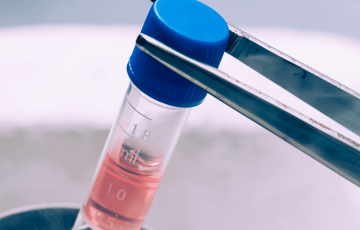Fertility Treatment Options
Finding out that you, or your partner, are infertile doesn’t have to stop you from having the family you want. Fertility treatments are a safe way to get pregnant despite infertility.
Fertility treatments are becoming increasingly popular as more and more couples rely on them to start their families.
But once you decide that fertility treatments are something that you want to try, where do you start?
There’s a wide range of information available online about fertility treatments, but the best way to start is by talking to your doctor.
Your doctor can give you the advice and guidance that you need.
Fertility Treatment Tests
To start, your doctor will put you through a series of tests to determine which treatment is right for you.
Women and men go through different tests.
For women, tests include blood work, transvaginal ultrasound, and a hysterosalpingogram (HSG):
- Blood work is required to evaluate the hormones that can tell your doctor important information about your ovarian health and egg numbers.
- Next, the doctor will perform a transvaginal ultrasound. This allows the doctor to gather additional information on your ovaries, endometrial lining, and uterus.
- The last test is a hysterosalpingogram (HSG). This evaluates the shape of the uterus and checks to see if your fallopian tubes are normal.
For men, the doctor needs to conduct a semen analysis to determine semen volume, and sperm concentration, movement, and shape.
After these tests, your doctor can determine which fertility treatment might suit you better.
Most Common Fertility Treatment Options
Your doctor will walk you through your options, but it’s good to know what to expect.
The three most common fertility treatments are surgery, ovulation induction, and in vitro fertilization.
1. Surgery
After looking at your ultrasound and the results of the other tests, your doctor may find the issue that is preventing you from becoming pregnant.
If your infertility is the result of a physical blockage or abnormality that prevents conception or implantation, surgery is often the only method available to correct the problem.
There are different minimally invasive surgical procedures which your doctor might suggest as your case’s best course of action:
- Laparoscopy is performed to assess or treat problems in the pelvic cavity, outside of the uterus. Laparoscopy can be performed for the treatment of endometriosis, pelvic scarring, and other conditions.
- Hysteroscopy is a minimally invasive surgical technique that allows your doctor to examine and perform procedures on the inside of the uterus. When performed for fertility treatment, it usually involves the removal of uterine fibroids, polyps, or adhesions. But there’s no need to worry, Hysteroscopies and laparoscopies are very common procedures.
- A Myomectomy is a surgical procedure to remove uterine fibroids. These benign tumors can complicate or even prevent pregnancy; therefore, fertility treatment may require their removal.
- Tubal Cannulation might be needed to clear certain types of blockage that occur near the proximal end of the fallopian tube.
2. Ovulation Induction
Ovulation happens each month naturally, but if you have certain complications that cause your ovulation cycle to be irregular or cause you to produce fewer eggs, you may benefit from ovulation induction.
This is simpler than surgery. Your doctor will prescribe you a medication that helps you ovulate or gets you to release more than one egg at a time. Ovulation induction vastly improves your chances of releasing an egg for fertilization.
There are medications like Clomid (clomiphene) that temporarily block your estrogen receptor, which contributes to issues with ovulation.
To stimulate egg growth and develop, there are injections like Gonal-F, Follistim, Bravelle, and Menopur.
3. In-vitro Fertilization (IVF)
If your doctor finds that you have blocked tubes, endometriosis, or a poor ovarian reserve (not many eggs available in the ovaries), IVF might be the best option for you.
IVF is the most effective form of assisted reproductive technology. The procedure can be done using your own eggs and your partner’s sperm.
During IVF, mature eggs are collected (retrieved) from ovaries and fertilized by sperm in a lab, to then be incubated for three to six days. After that, the fertilized egg or eggs are transferred to the uterus. One full cycle of IVF takes about three weeks, and sometimes, more than one cycle might be required.
About 12 days to two weeks after egg retrieval, your doctor will test a sample of your blood to detect whether you’re pregnant.
Depending on your case, you might need to take several different medications:
- To stimulate your ovaries, you might receive an injectable medication containing a follicle-stimulating hormone (FSH), a luteinizing hormone (LH), or a combination of both.
- To help your eggs mature, you will take human chorionic gonadotropin (HCG).
- You might have to take medications to prevent your body from releasing the developing eggs too soon.
- Or you might have to begin taking progesterone supplements to make the lining of your uterus more receptive to implantation.
Now that you know the different fertility treatment options, schedule an appointment with your doctor to explore them further.
If you are currently undergoing any of the fertility treatment options mentioned above, at SMP Pharmacy, we can cover all of your fertility medication needs.
The most important part of our job is making sure that your treatment goes well.
If you are interested in learning more about our pharmacy and how we can help you give us a call at 1-855-255-5005.




